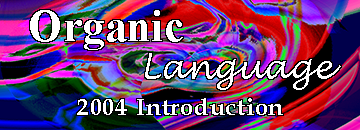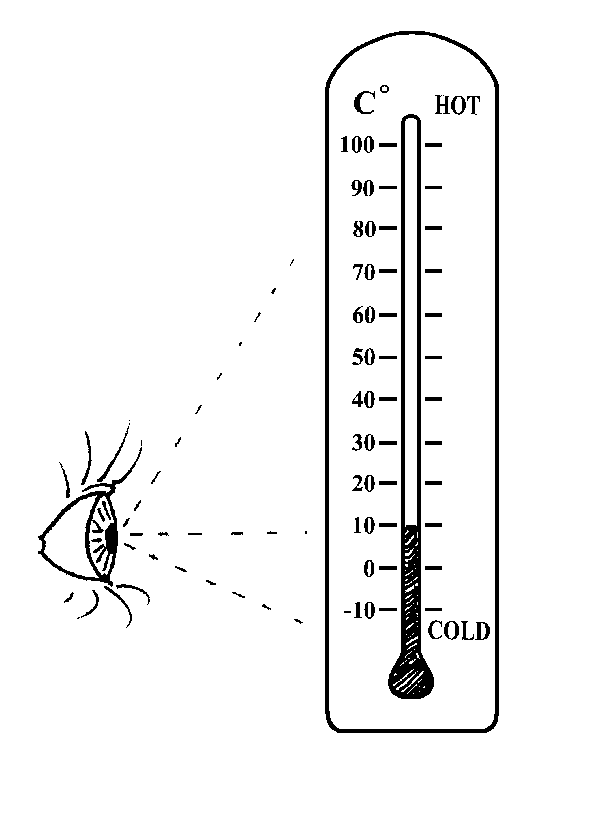



INTRODUCTION TO A 2004 DRAFT OF ORGANIC LANGUAGE
The works in this collection are not written works in the sense of prose or poetry, but musical pieces for performance by the reader in a quiet, non-projected voice: that voice we use as we say something to ourselves — the sound is audible but conveyed to the inner ear via the tissues of the body. The title “Organic Language,” is apt for the two main objectives of the project: firstly, to rediscover the sensory basis of speech; and secondly, by using a bodily, sensory approach to meaning, to explore the inner spaces of our experience of being.
Our notions of what is happening when we communicate with someone using spoken words, has been corrupted by the proliferation in our environment of written language. We go through life under the illusion that written English is a true rendition of spoken English. However, even if we render a spoken utterance in a phonetic script, the factors recorded are only those that are sufficient to reference spoken words to a written list of words, with written descriptions of their meaning — a dictionary. We thus leave the realm of speech and enter the world of written English. From that point we go on to infer that the written version of a spoken utterance has captured the communication that took place.

When you read the expression “It's cold tonight,” (perhaps spoken by a character in a story), you necessarily employ an intellectual faculty to recognise the words. Whilst you may evoke a memory of a feeling of coldness, you must use an intellectual comparison of memories of coldness to interpret the phrase. This is like looking at the scale on a thermometer: you gain an intellectual conception of coldness rather than an experience of coldness. When however, someone says to you “It's cold tonight,” the pronunciation of “cold” communicates a physical sensation of coldness directly: the shiver in the speaker's body tissues registers in the vocal sound and creates a similar sensation in your own body (Part 2 aims to give some insight into the mechanics of this process). Also you have a feeling for temperature by being in the same immediate environment as the speaker. Any intellectual interpretation happens after the initial sensation.
Part 1 of this collection consists of one work, The Sometimes ... Word Book (published separately in 1994), which is itself a collection of thirty-four one-word pieces. The aim of these pieces is to awaken a body-based, sensual perception of the mechanics of vocal sound production and perception. Each drawing is essentially a musical chart of the particular pronunciation of a word. The graphics and lettering should be followed by the eye in a time sequence indicated by the spelling of the word, as you pronounce it in the soft, personal voice referred to earlier. The graphic design of the lettering and associated decoration often indicate pathways and shapes that the resonating sound take in the tissues and air spaces of the body as the particular pronunciations are produced. You should imagine the contours and textures of the illustration being made in your body tissues as you pronounce the word.
Many of the words I have chosen, when perceived in this way, seem to act out their meaning in a symbolic language of shape and acoustic texture, that is somehow closer to the experience of meaning than our conception of the word itself. I call this quality “phonetic enactment.” I have tried to capture the obvious (and perhaps fundamental) shape and moving contour of each word. Where I have succeeded, the reader should derive a sense of cliché: rather than presenting a novel interpretation of a word, I have sought to uncover the forgotten imagery behind the word. This is not to say that we always use such conventional pronunciations in everyday speech — the dictionary meaning of the words of an utterance are often at variance with the meaning conveyed by voice tone and contour of phrase. For example, a simple greeting such as “how are you?” can communicate a meaning ranging from a sincere enquiry after someone's health, to a disdainful reproach; the adjective “exciting” can be pronounced so that it conveys the meaning of “utterly boring and drear.”
By using this reading technique, you should begin to perceive the fundamental polyphony of vocal sound: sounds overlap; one resonance may continue whilst another is articulated. (This perception is masked by the segmented, mono-linear system of alphabetic spelling we use to represent English words.) Gradually, a perception should begin to emerge of a word as a complex, three-dimensional kinetic sculpture in sound that is generated by an equally complex acoustic environment, set up in the body as the word is pronounced. The resonance of vocal sound in this environment can be perceived with the physical senses and comprises a three-dimensional meaning space that is at once separate from the superficial articulation of the word (sometimes even conveying a meaning at variance with the dictionary meaning of the word), yet provides the integral force of meaning in the communication — a living experience as opposed to the intellectual comprehension associated with reading.
The internal meaning spaces I have tried to depict can only be constructed by unhurried contemplation. Part 1, The Sometimes ... Word Book, is a big work, to attempt to experience it is five minutes would belike playing your favourite Beethoven symphony at triple the normal speed — it just doesn't work. The meaning scenarios have to build over a certain space of time to achieve the intended depth of meaning.
Part 2 sets out my theoretical approach. The settings of conventional poetry that I use as illustrations, are taken from an early work, The Music of Speech, which I produced in 1978 with the support and encouragement of Dr Franz Holford, then editor of Alberts Music in Sydney. I came to consider the miniscule style of calligraphy I had used, to be inaccessible to the average reader, and so went on to develop the larger, one-word style of composition used in Part 1.
My theoretical approach is not comprehensible in terms of modern, academic linguistics, which employs a simplistic model of vocal sound as a “buzz” from the vocal folds that resonates in the air-filled cavities of the upper respiratory tract, affected only by the shaping of those cavities and the articulatory movements of the tongue and lips. The fact that vocal sound resonates in the solid tissues of the body (as well as the air-filled spaces) is not considered at all. If Stradivari had employed the same logic he would have made his violins out of cast iron — the sound would have been the same and his instruments would have been indestructible.
The final pieces in Part 3, Visions of Titan and Counterpoint, aim to work directly with supra-verbal, internal meaning spaces, though still using words as entry points and initial energy generation tools. In Counterpoint, I provide two concurrent sequences. When the reader succeeds in generating the two meaning spaces at once, the sensation of “meaning” is retained, but the consciousness moves to a level that can encompass both meanings at once — a state akin to that induced by deep meditation.
* * *
Irrespective of any meaning experience that may be attributed to these works, I have intended the calligraphic-phonetic medium itself, to be an empirical demonstration of the wondrous and complex nature of spoken communication. If you experience a spark of recognition of the process of speech sound production, you will have had a glimpse of how the use of oversimplified interpretive models feeds back onto our perceptions, channeling and restricting them. Whilst the conceptual models of empirical science can be great tools for the advancement of humanity, they can alienate us from our own innate and natural perceptions, if embraced without qualification (i.e. accepted as absolute truth).
This of course, applies to the theoretical structures I have used to produce the following works. However, I am hopeful that this body-based, sensual approach to speech, and its relation to traditional written language, may provide a bridge between the natural wonder of fluent speech, which all people possess as a genetic inheritance, and the man-made contrivance of written language, which, as traditionally explained, remains inaccessible to a significant proportion of our population.
* * * * *
| Links |
|
Organic Language Organic Language Part 1 extra Organic Language Part 2 extra Organic Language Part 3 extra (this page) |